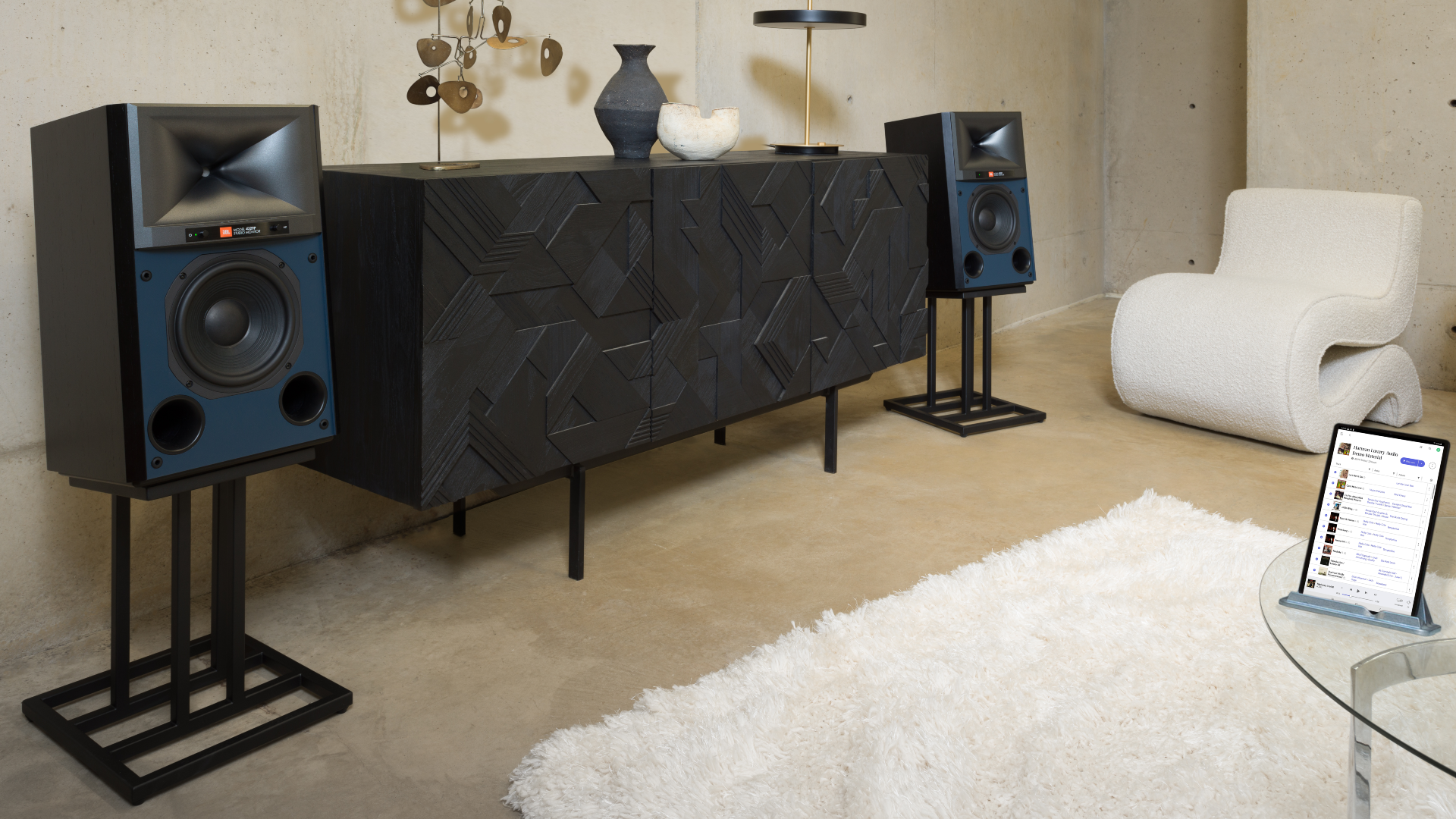
It’s still the case today that all-in-one systems generally don’t tend to perform as well as the best separates systems totalling similar amounts. However, such space-efficient, convenient, do-it-all designs are improving sonically by the year and becoming all the more compelling for it. Case in point: the JBL 4329P Studio Monitor.
Build & features
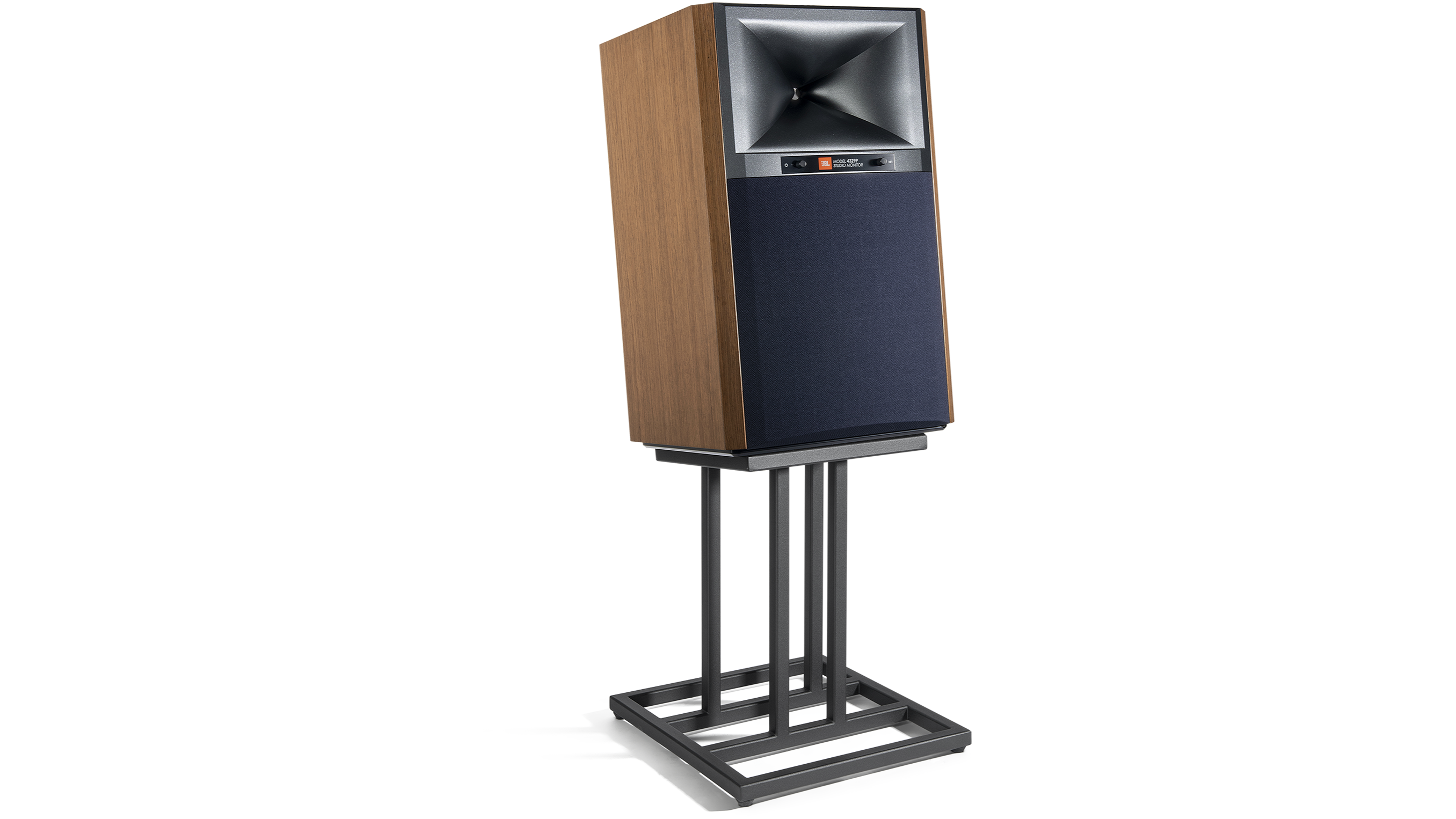
The 4329P are powered, streaming-savvy speakers that share a strong aesthetic likeliness to previous passive JBL models, namely the five-star, high-end 4349 speakers we reviewed back in 2021, though on the whole they have more in common with their smaller siblings, the (also powered) 4305P Studio Monitor.
JBL’s iconic 25mm horn-loaded driver is driven by 50 watts of amplification and fights for your gaze against a 20cm purple pulp paper cone mid/bass (driven by a 250W amplifier) below it, the combination making for a rather imposing-looking speaker, particularly when the woofer-covering grille is removed.
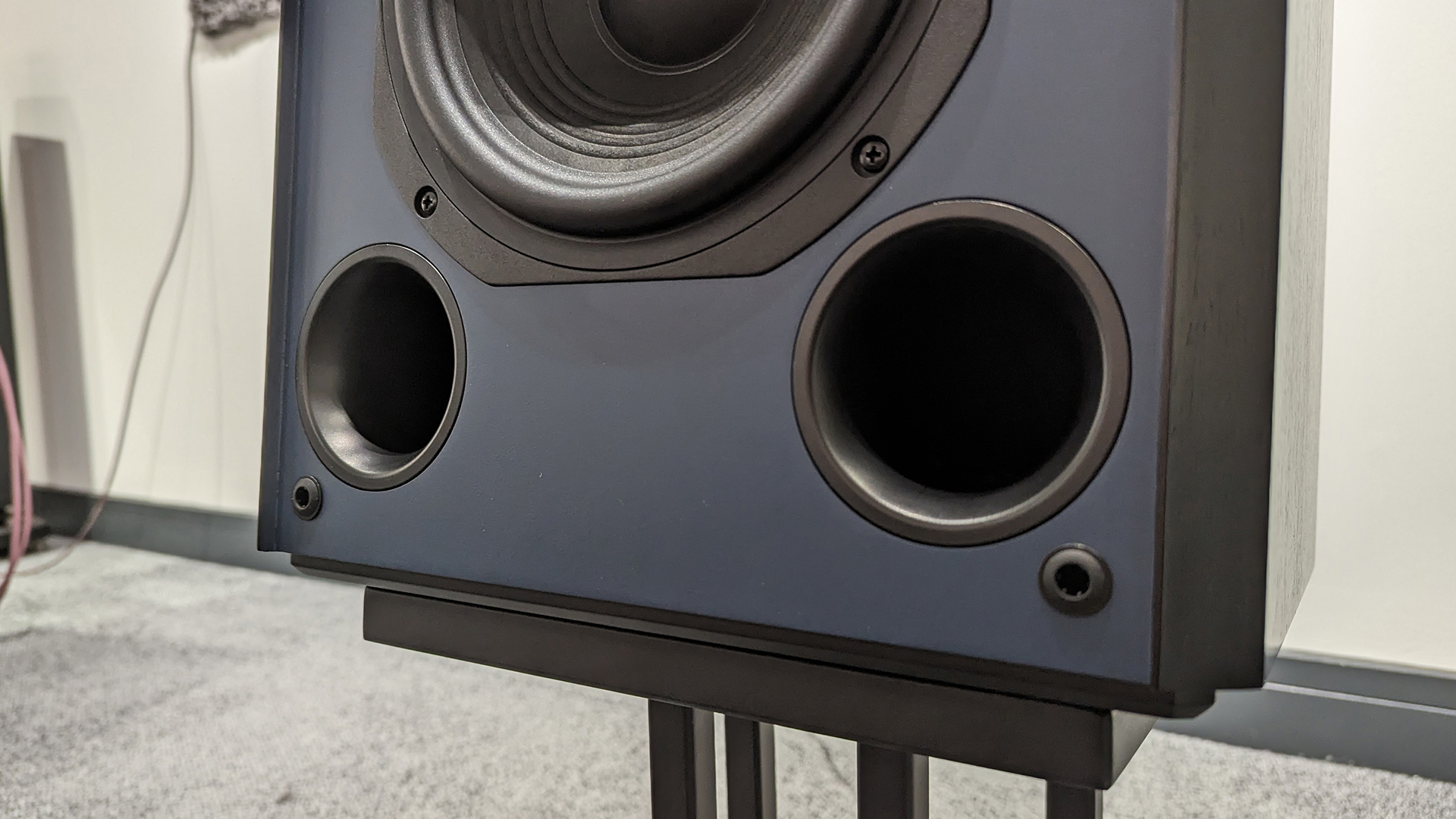
Once again you get a navy baffle with either a walnut or a black cabinet finish, both of which fit well with the retro aesthetic JBL’s design team has adopted in recent years. There is also a newer White Edition that is destined for a Marmite reaction.
Have a look at the rear panel of the master speaker and you find much the same set of comprehensive connections as the smaller model. These connections appear on just one of the speakers, of course, as that handles all the playback control and processing while the other simply does as it is told.
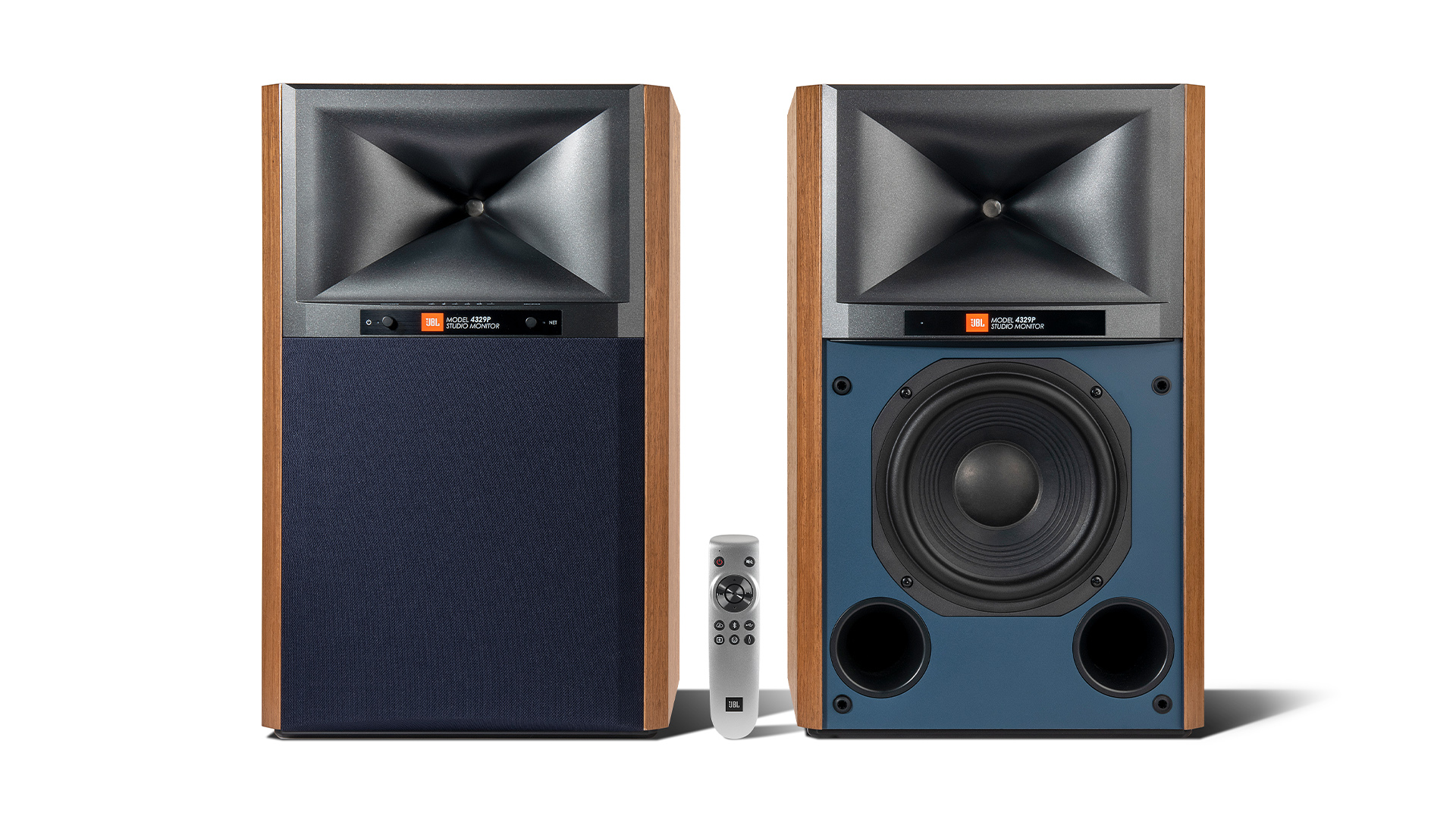
Streaming Wi-fi, Google Cast, AirPlay 2, aptX Adaptive Bluetooth
Inputs XLR, 3.5mm aux, Toslink/optical, USB Type B
Outputs Subwoofer
Finishes x3
Dimensions 51.5 x 32 x 32.2 (hwd, cm)
Weight 15.7kg (primary); 15.6kg (secondary)
That primary speaker offers a range of inputs to complement its core streaming support, which spans Apple AirPlay 2, Google Chromecast, DLNA and Bluetooth (aptX Adaptive, 5.3). There’s balanced XLR (with a sensitivity switch for -10dB or +4dB), 3.5mm aux, and Toslink/optical and USB Type B that both support PCM files up to 192kHz. A subwoofer output can facilitate a 2.1 system with an external subwoofer for those who crave more bass, though those who find they have too much (the speakers are close to a wall, perhaps) can make use of the -3dB bass switch to suck some low frequencies out.
You might be surprised to see two ethernet sockets, but of course only one is for tethering the speakers to your home network, which is recommended over using the wi-fi connection for greater stability. The other directly connects the primary speaker to the secondary one (either can be assigned to the left and right channels) via the supplied 6m CAT5e cable if you so wish.
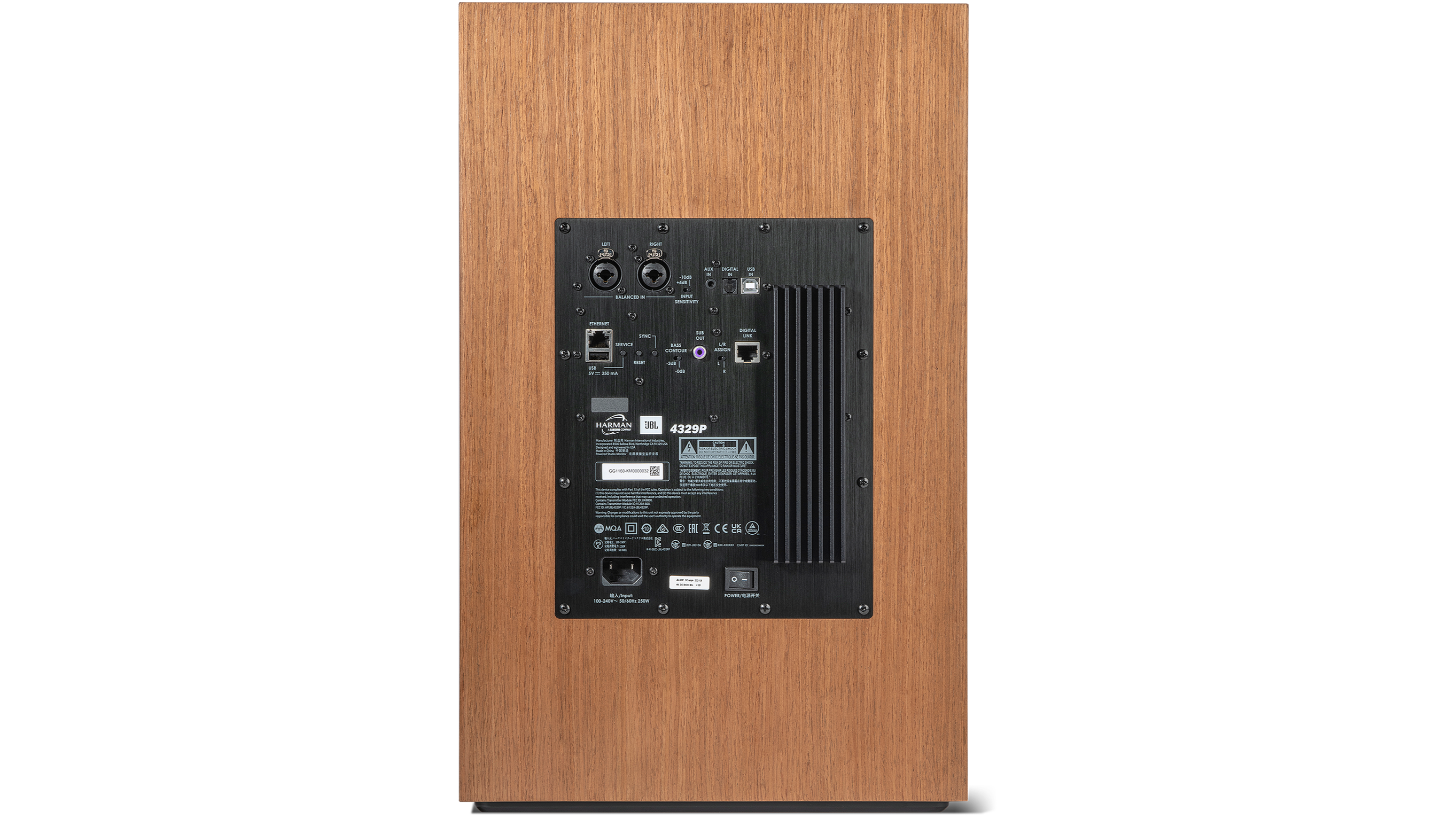
While a physical connection could make for quite the eyesore, it does allow the passthrough of files up to 32-bit/192kHz, compared to the wireless connection’s 24-bit/96kHz limit. Aside from that socket, the secondary speaker merely has a power socket – both speakers require mains power.
The primary speaker’s control panel features power/volume and input dials, above which is the LED display that shows the current input selected. We like how the display strip sits within a slightly upward-facing contour and so isn’t really visible from a seated position.
The speakers themselves also look up to the heavens somewhat when sat back, like a patient in an unreclined dentist’s chair, on JBL’s JS-80 stands (£175 / $400 / AU$600 per pair). We find the 4329P perform optimally in our test rooms when on stands, pulled out 30cm from the wall and slightly toed in.
Sound
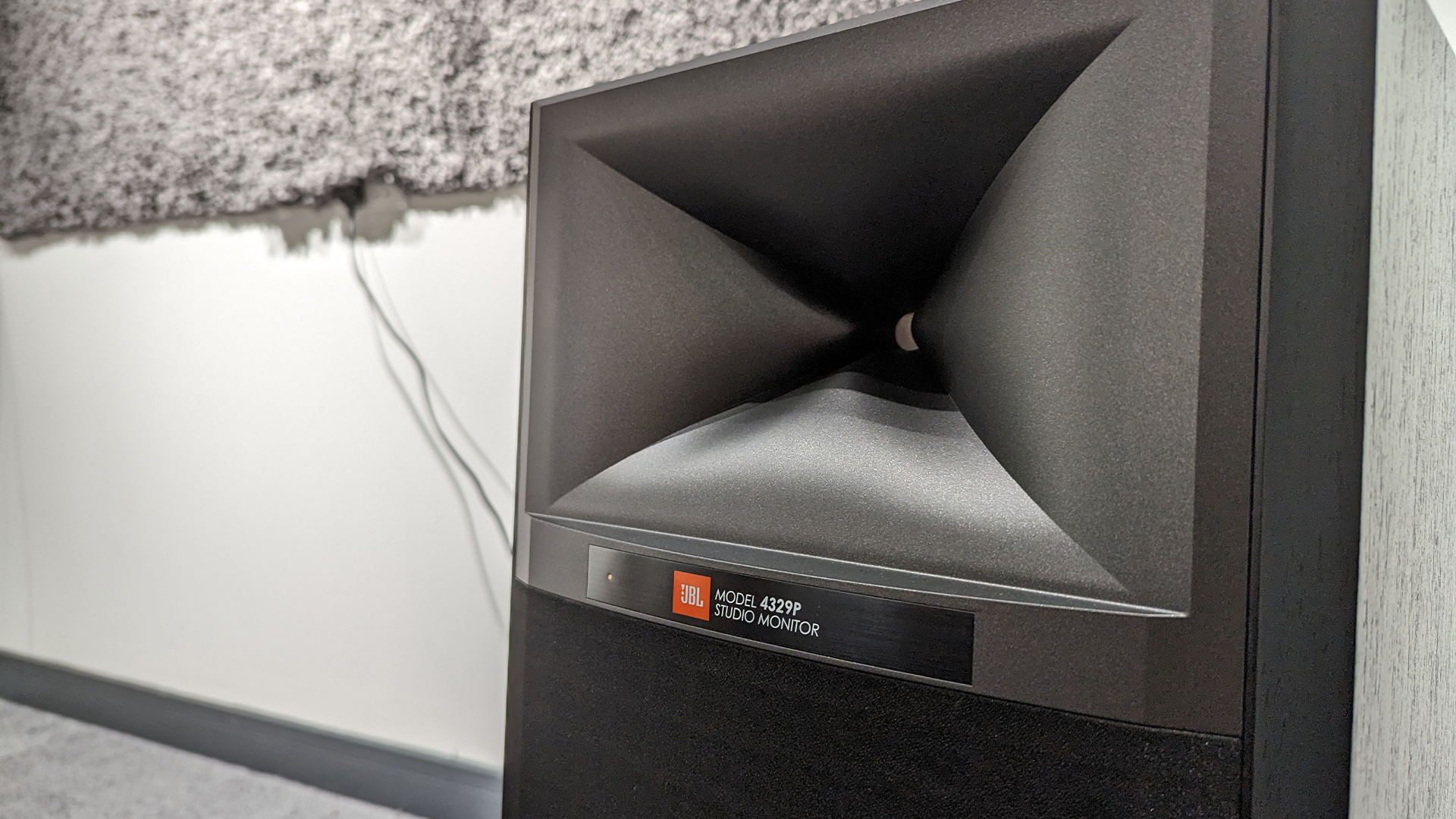
We call up Tidal over Chromecast, local files on an iPad and Google Pixel phone over AirPlay 2 and Bluetooth, and make use of the 4329P’s XLR input by hooking up our reference Naim ND555 streamer plugged into Chord’s Hugo TT DAC as a source.
Even with the Bluetooth presentation, which unsurprisingly sounds a little cruder than the other playback methods, the JBLs have a mightily impressive presence – open, solid and powerful, with a quantity and quality of bass that comparatively make the KEF LS50 Wireless II’s low-frequency output seem like a mere purr.
These are speakers that sound more or less as they look. They do everything to capture our attention as we play Pink Floyd’s Time, conveying the size and scale of the track’s atmospheric soundscape while ensuring every instrument has the room, clarity and texture needed for its role to be fully appreciated in the mix. That bass extension is really able to anchor the bass chords and carry the undertow of the track, too, in a way that the KEFs cannot. Such a comparison isn’t hugely surprising when you consider the size of the two speakers’ cabinets and drivers, and the KEFs do respond with an aqueous sense of musical flow, though it’s impossible not to miss the 4329P’s scale and full-bodiedness whenever we switch to the current What Hi-Fi? Award winners.
Play Tom Odell’s Live At Union Chapel album and it’s a similar story: the JBLs communicate the acoustics of the church setting and the echoic impact it has on his piano playing and vocal delivery, giving them acres of space, too, when the choir comes in behind him. We switch to Toto’s Rosanna, and the 4329P lap up the track’s energy, with no sign of refrain as they roll with the drum beat and piano melodies, punch through the climaxes, and soar with the guitar solos and synths. Importantly for this kind of track, there’s tight integration between the frequencies that echoes the cooperation we’ve heard previously between JBL’s horn and bass drivers. Often kit encouraging you to turn the volume up is a sign of it offering little else to keep you entertained, but not here; this system just wants to have as much fun as you’re willing to have.
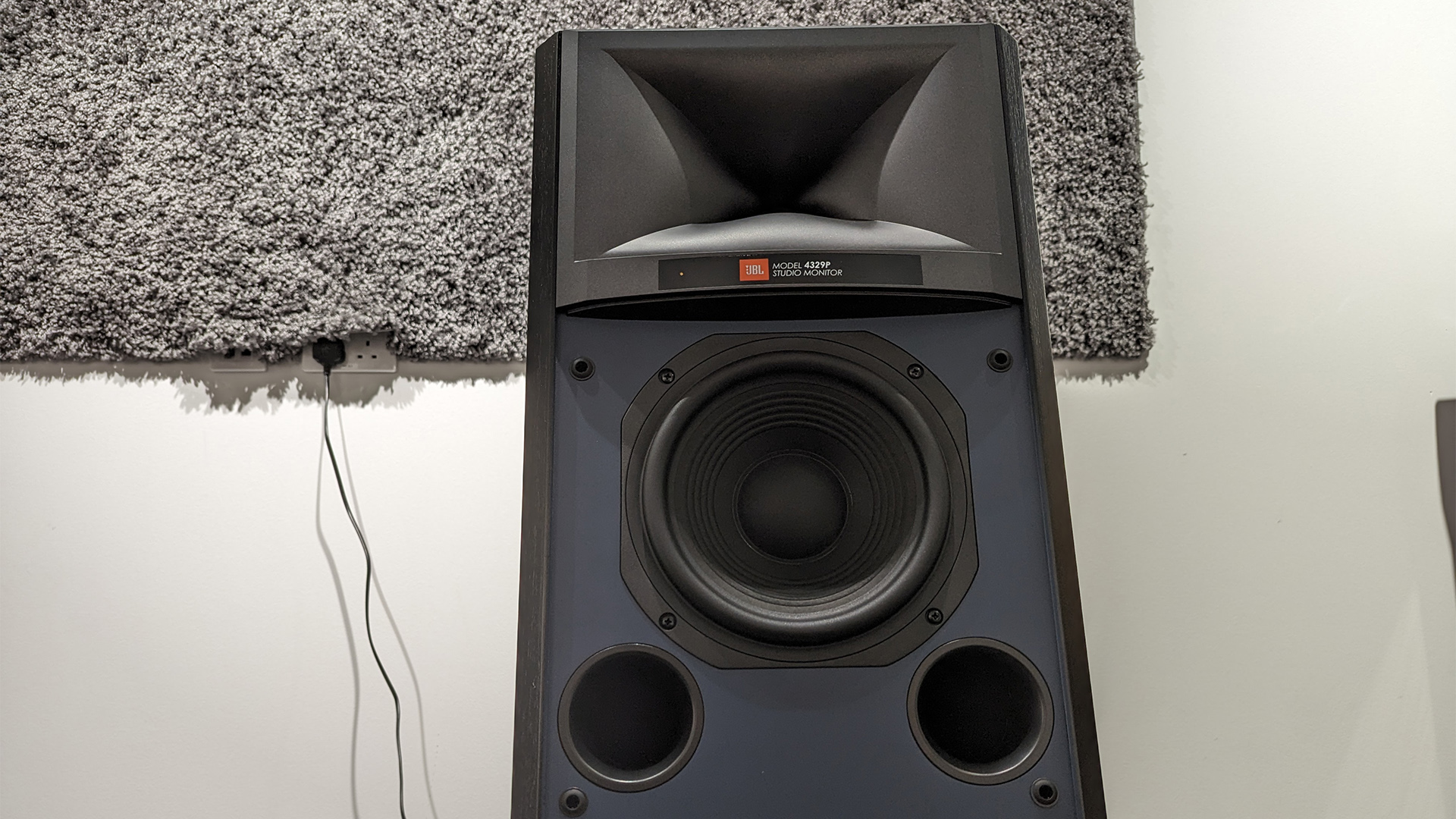
We’ve heard many products of this sonic ilk that turn out to be one-dimensional – big and boisterous but lacking in subtlety or tonal balance – but there’s a sophistication brought by decent levels of dynamic expression here, as well as a smoothness to the midrange that ensures vocals sound pleasingly lush and full.
Still, we wish some of that refinement had been extended to the treble, as a bit more sweetness to the higher frequencies would make them slightly less tiring to listen to for longer periods, as well as more forgiving of brighter recordings. Choosing Bluetooth as the source notably squashes the presentation, with losses apparent in clarity and detail too, but generally it keeps its end of the bargain as a convenient alternative to wi-fi or physical inputs.
Verdict

That the JBL are so versatile, not only in terms of connectivity and placement, while managing to sound so mature, is testament to JBL’s persistent efforts in speaker design and electronics, and a milestone in all-in-one speaker systems of this kind and at this price. Will the sonic sacrifice inherent in choosing all-in-one designs over separates systems always exist? Probably, but the once-wide gap is certainly getting narrower.
Review published: September 2023. Review updated: November 2024.
SCORES
- Sound 5
- Features 5
- Build 4
MORE:
Also consider the KEF LS50 Wireless II
Read our review of the smaller, cheaper JBL 4305P Studio Monitor
Best hi-fi systems: CD, vinyl and streaming music systems for the home







